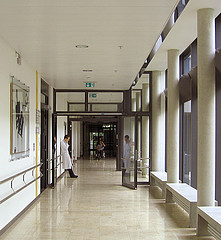 As the price of healthcare in the United States continues to increase faster than inflation and total expenditures outpace the GDP; the industry is tasked with reducing expenditures. Strategies include reducing waste, implementing automation, decreasing human error and improving decision making processes.
As the price of healthcare in the United States continues to increase faster than inflation and total expenditures outpace the GDP; the industry is tasked with reducing expenditures. Strategies include reducing waste, implementing automation, decreasing human error and improving decision making processes.
One area that falls within the decision making parameter is the hospital stay. When a patient is admitted to the hospital for surgery, the physician and hospital staff needs to have a plan in place to manage the process. Hospital stays represent a significant cost factor; according to statehealthfacts.org the average cost of one day of inpatient care in hospital is approximately $1,900. Allowing a hospital stay to last longer than necessary is expensive and overburdens an industry that is desperately trying to contain costs. One of the most important decisions that healthcare professionals make, is knowing when to discharge their patients from the hospital.
Liability issues complicate the discharge process: the physician must be able to determine the potential for adverse health consequences upon discharge, develop a discharge plan for their patient, and formulate a post-hospital service plan. Fear of complications results in doctors keeping their patients in the hospital for longer periods following their operations.
The solution is to keep the procedure as minimal as possible, control bleeding, and practice effective infection control management. Electrosurgery, with its excellent track record for improved surgical outcomes due to increased control over bleeding during operations, provides the answer. Electrosurgery cauterizes the tiny blood vessels that tend to bleed profusely during procedures, and maintains the integrity of the surgical field by keeping it free and clear of excess fluid and tissue. Procedures are completed more quickly and have fewer postoperative complications.
Your discharge decisions become easier when your patients recover more quickly and easily from their surgeries. Medical liability issues are reduced when complications are less prevalent. Although national health reform may be necessary to provide relief for physicians concerns over medical liability, using preventative measures to stop problems before they occur is the key to effective cost containment, patient comfort and safety, and reduced stress to healthcare professionals.
Photo courtesy of digital cat







